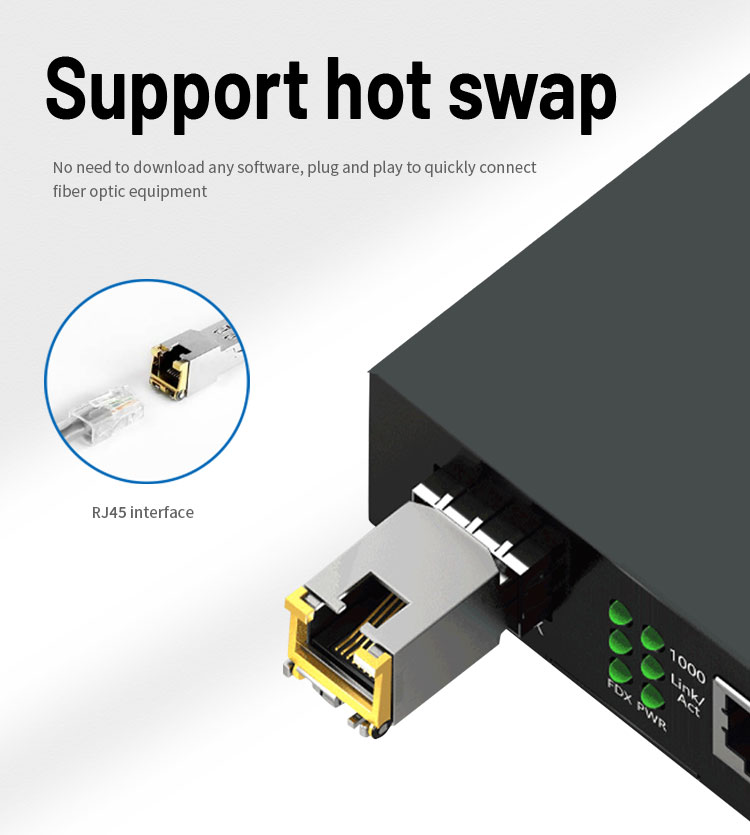The difference between copper SFP vs fiber SFP will be described in the next part from the aspects of distance, operating temperature, security, interface, and cost.
Distance
Copper SFP supports the max cable distance of 100m, while the fiber SFP allows the transmission distance up to 120km, which demonstrates the high performance over longer distances. Generally, when the transmission distance is over 328 ft/100 m, fiber SFP must be considered instead of copper SFP, since 1000Mbps could only go as far as 100m over copper cabling.
Operating Temperature
Both copper SFP and fiber SFP support 0 to 70°C (32 to 158°F) case temperature as default. However, the power consumption and case surface will affect the temperature when copper SFP and fiber SFP operate in the specific applications. The typical power consumption of fiber SFP is 0.8W, the copper SFP is 1.05w. So copper SFP usually runs much hotter than the fiber SFP. Generally, the fiber SFP runs at 40°C (104°F) while the copper SFP should run around 52°C (126°F) in the same environment.
Security
When it comes to the security in the connection between copper SFP vs fiber SFP, fiber SFP is worthier of being recommended than copper SFP. The reason is that fiber doesn’t conduct electricity, which makes it resistant to lightning strikes.
Interface
The SFP devices allow the switch to connect to cables of different types. Copper SFP connects an Ethernet copper cable with the RJ45 connector interface. While fiber SFP commonly connects a fiber optic cable with LC connector. In addition, for short-distance links on a Gigabit switch, it makes no difference if you use SFP ports or RJ45 ports to interconnect switches. The SFP port is mainly used to allow longer distance fiber connections. The enterprise-class switches usually include two or more SFP ports. However, in some case, the switch on one side does not have standard Ethernet ports but only with SFP slots, and the switch on the other side only has RJ45 ports which can’t be fitted with fiber ports. Under this condition, you have to insert a copper SFP module into the SFP slot on the switch, then use a Cat5 Ethernet cable to connect the copper SFP and the RJ45 gigabit port on the other switch.
Cost
In fact, copper SFP may be more expensive than fiber SFP transceiver within the same short distance. Copper SFP is popular for short-range backbone applications, as it’s easier and cheaper to use 1G copper SFPs and patch cables. However, with the boom of third-party vendors, fully compatible and trustworthy fiber SFP transceivers have been developed to support lower cost fiber runs. The price gap between 100m copper SFP and 40km 1000BASE-EX SFP fiber SFP is reduced. Thus, added choices are offered for customers to meet their specific demands.
Conclusion
Through copper SFP vs fiber SFP comparison, we can see that each one has its own set of advantages and disadvantages. Nowadays, the solution of mixing copper and fiber is the best practice to ensure the manageable data center. With the developing and unpredictable technology, we’d better think about all aspects of the product to meet our demands.

 HANSUN
HANSUN 